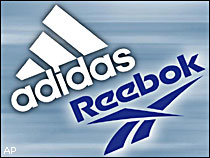Recently, a new form of payment has been introduced to the world: Apple Pay. This is a “digital wallet” which allows people to make purchases with a single touch on their mobile devices. Although this form of payment has been around, such as the Google Wallet, Apple Pay has already dominated the mobile payments market in only one week. What makes Apple Pay so special and why has it already become the most popular mobile payments platform?
There are numerous locations that provide NFC (Near Field Communication) payments, and Apple Pay seems to be the easiest to utilize. Unlike other methods, Apple Pay requires consumers to only hold their finger on the mobile’s fingerprint scanner called the Touch ID. There will be no more of reaching into your wallet and trying to find a piece of plastic. Comparing to the Google Wallet, individuals are required to take a few more steps to complete the transaction such as entering their pin number. Apple Pay seems to be more convenient where it outperforms its competitors.
More to Apple Pay’s popularity is their secured system. According to NBC News, “The tokenization system built into Apple Pay is considered one of the most secure, fraud-proof ways to make payments, because it keeps consumers’ actual credit card data from ever entering a retailer’s point-of-sale system”. Furthermore, Apple Pay requires biometric verification to continue with the transaction. Security is an important aspect that grabs consumer’s attention. Since the hacking incident on CurrentC, one of Apple Pay’s competitors, people are starting to be very cautious on using the NFC payment method. Apple Pay is known to include a secured server that may even be safer than using credit cards. These key features of Apple Pay have brought its service on top within one week of their release.
As appealing as Apple Pay sounds, other NFC payment platforms provide more features that do not exist in Apple Pay. For example, Google Wallet is able to accept any type of major credit and debit cards. Apple Pay does not accept discover which limits their target market. Also, Google Wallet is also available in both iOS and Android devices. Using Google Wallet, individuals are able to send and accept money from others. With other digital wallets capable of much more features, Apple Pay still beats its competitors. Its feature of being highly convenient and secured has boosted up their amount of users. You now can understand how quality improves profitability.
Fulfilling customer expectations with the services Apple provides can gain additional sales. Apple Pay has also boosted up iPhone 6 sales, as it is only compatible with that type of device. Not only has its features bring in more users, but help generate more sales in the market. It’s clever to see how Apple Pay is also used as a marketing strategy. The creation of Apple Pay may be the beginning to a generation of solely mobile payments.
Do you believe that Apple Pay will remain on top of its competitors? How much longer?
As an Apple user, I may come out biased on over-crediting Apple Pay. Do you believe their service is superior to others?
Sources:
http://www.nbcnews.com/tech/gadgets/can-apple-win-mobile-wallet-war-n240011





 Businesses try to implement various strategies such as differentiation, low price, and rapid response to stay ahead in competition and to attract more customers. But, when it comes to hospital industry, there is nothing much to do to increase profit other than improving internally such as adding new services, outsourcing some work, improve quality, increase profit margin etc. Most of the hospitals have successfully increase their revenue by charging higher amount to insurance holders and get away with it as not many people pay attention to it.
Businesses try to implement various strategies such as differentiation, low price, and rapid response to stay ahead in competition and to attract more customers. But, when it comes to hospital industry, there is nothing much to do to increase profit other than improving internally such as adding new services, outsourcing some work, improve quality, increase profit margin etc. Most of the hospitals have successfully increase their revenue by charging higher amount to insurance holders and get away with it as not many people pay attention to it.





